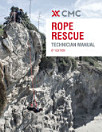Innovating Science Teacher Education: A History and Philosophy of Science Perspective
About this ebook
Field-tested in science education courses, this book is designed to involve readers in critically thinking about the history and philosophy of science and to engage science educators in learning how to progressively introduce various aspects of ‘science-in-the-making’ in their classrooms, to promote discussions highlighting controversial historical episodes included in the science curriculum, and to expose their students to the controversies and encourage them to support, defend or critique the different interpretations. Innovating Science Teacher Education offers guidelines to go beyond traditional textbooks, curricula, and teaching methods and innovate with respect to science teacher education and classroom teaching.
About the author
Mansoor Niaz is Professor at the Chemistry Department, Universidad de Oriente, Cumaná, Venezuela.






